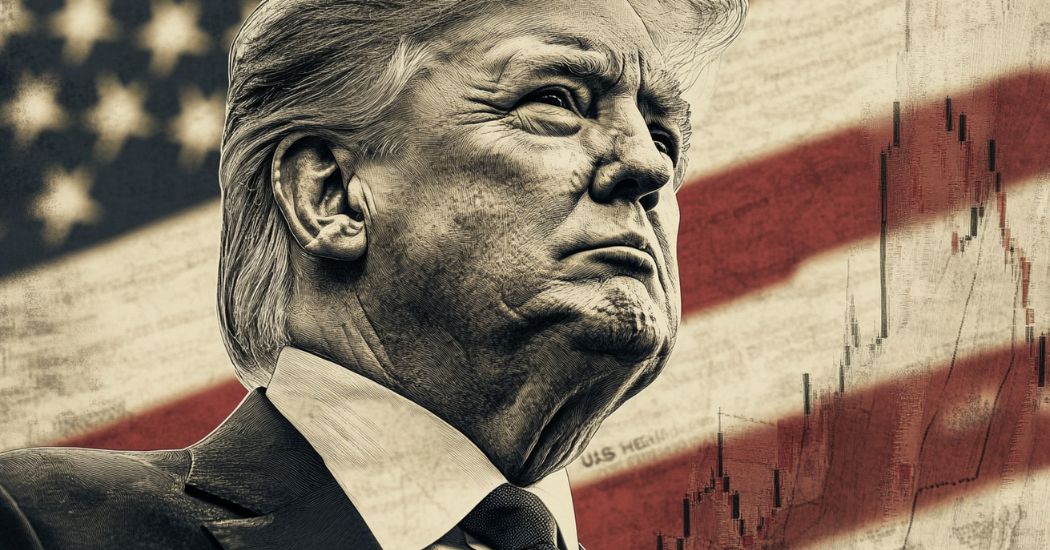
Trump Wins, Markets Surge: How to Build a Resilient Portfolio Amid Policy Shifts


Last week, I shared some insights into how presidential elections could shape business trends.
With Trump elected just hours ago, we’ve seen the markets respond swiftly, rallying in the immediate aftermath. This market response reflects the investment community’s eagerness for a stable path forward, especially as businesses and investors look to adapt to new leadership.
Let’s break down the factors at play and consider how you can navigate investments in this new political landscape, focusing on the historical resilience of markets, key sectors poised to benefit, and ways to fortify your portfolio against potential risks.
The Resilience of Markets to Presidential Changes
Historically, markets have shown resilience to changes in the White House, regardless of the president’s political affiliation.
What typically matters more to investors is certainty and stability.
When leadership solidifies, it often reduces uncertainty, fostering an environment where businesses and investors feel more confident about taking calculated risks and making investments. This trend holds especially true in post-election periods, as markets tend to rally during the year-end holiday season—a phenomenon commonly referred to as the “Santa Claus rally.”
Given the seasonal tendency for year-end growth, there’s a good chance that markets will experience continued optimism. But if you’ve followed my writing for awhile, you would know that my investment strategy remains focused on long-term fundamentals rather than short-term political shifts.
Investment Strategy in a Post-Election Market
One of my core investment philosophies is to avoid making significant portfolio changes based on political and other external events.
Instead, I focus on the intrinsic value and growth potential of individual stocks.
Political and economic landscapes shift too frequently and can be too unpredictable to base an entire investment strategy on them. Instead, I look for companies with strong fundamentals, solid growth trajectories, and sound business strategies.

Potential Sectors Benefiting Under Trump’s Policies
While I may not adjust my portfolio based on elections, I have often been asked if there are sectors I would consider going overweight on. For example, when Biden got elected, cannabis stocks rallied. So, which sectors could stand to benefit under Trump’s policies? Here are a few sectors that may experience tailwinds given the administration’s policy priorities:
- Banking
Reduced financial regulations may foster an environment conducive to mergers and acquisitions in the banking sector. Large banks like JPMorgan Chase and Bank of America could capitalize on looser restrictions to expand their market share and service offerings. This is a sector that I actively monitor, and I plan to add high-quality banks to my holdings when their valuations become attractive. - Defense
With an anticipated increase in military spending, defense contractors like Lockheed Martin may see heightened demand for their products and services. This sector is typically a priority under administrations with strong defense agendas. This is also a sector that I actively monitor, and I plan to add high-quality defence companies to my holdings when their valuations become attractive. - Biotech & Healthcare
Potential tax cuts, grants, and deregulation in the healthcare and biotech sectors could be beneficial, especially for big pharmaceutical and biotech firms. This might create opportunities for companies engaged in research, development, and manufacturing in these fields. If you’ve followed me for some time, you would know that even though this is a sector my wife is an expert in, we choose not to invest in individual companies due to the high-risk nature of regulatory approvals from the FDA or EMA. Instead, we invest in ETFs to capture sectoral growth. - Energy
Trump’s support for deregulation and fossil fuels is likely to benefit major players in the energy sector, including ExxonMobil, Chevron, ConocoPhillips, and Occidental Petroleum. Reduced regulatory pressures could allow these companies to boost production and improve profitability. This is a sector that I do not invest in, as they tend to trade cyclically. I may trade this sector from time to time, but do not hold long term investments. - Small-Cap and Mid-Cap Companies
Domestic-focused companies, particularly those in small- and mid-cap segments, may benefit from potential tariffs aimed at promoting U.S. production. Firms that manufacture primarily for the U.S. market could experience less competitive pressure from foreign imports and potentially stronger demand. Again, this is not a sector that I focus on.
Potential Risks from Trump’s Policies
While several sectors stand to gain, there are also potential risks that investors should keep in mind. Certain policies could introduce inflationary pressures, disrupt labor markets, and increase borrowing costs, which could impact various industries differently.
- Tariffs on Imports
Tariffs aimed at reducing dependency on imports may raise prices, leading to inflation. Higher consumer costs could ultimately squeeze household budgets and impact demand across various sectors. - Immigration Policies
Stricter immigration policies could reduce the availability of lower-cost labor, increasing operational costs in industries reliant on immigrant labor, such as agriculture, manufacturing, and construction. - Rising Treasury Yields
Inflation concerns could drive Treasury yields higher, increasing borrowing costs for sectors with high debt exposure, such as real estate and cyclically sensitive industries. This could curtail growth in these sectors if borrowing becomes more expensive. - Federal Reserve Response
If inflation accelerates, the Federal Reserve may respond by raising interest rates, which can lead to market downturns as borrowing costs increase. This would likely have a pronounced effect on growth-dependent stocks.
Protecting Your Portfolio
If you’ve followed what we’ve taught, investing only in good companies at a good price, you have nothing to worry about. Good businesses have economic moats, pricing power, and strong management to navigate uncertainties. And owning good assets is the best protection against uncertainty. Good businesses have these advantages:
- Businesses that Command Pricing Power
Look for companies with strong pricing power—those that can pass increased costs onto consumers without losing demand. These firms are better positioned to maintain profitability during inflationary periods. - Low Debt and High Cash Reserves
Favour companies with low debt levels and substantial cash reserves. These companies are less reliant on borrowing and can weather rising interest rates more comfortably. They’re also positioned to make strategic acquisitions or investments during economic downturns.
Some examples of companies with strong cash positions, low debt, and pricing power include big tech players like Amazon, Meta, Adobe, Microsoft, and Nvidia. These firms not only have the financial muscle to withstand economic challenges but also have the innovation capabilities to continue growing even under tougher economic conditions.
Final Takeaway: A Quality Portfolio Over Political Bias
Ultimately, my philosophy is to maintain a high-quality portfolio that can perform well across diverse economic conditions.
While it’s essential to stay informed about how policies may impact markets, the core of your investment strategy should be aligned with your long-term financial goals rather than political biases. By focusing on financial fundamentals and selecting investments that can adapt to a variety of market environments, you’ll build a portfolio that’s resilient and geared toward sustainable growth.
As always, when it comes to investing, it’s wise to set aside personal politics and focus on quality assets and sound financial goals. With a balanced, thoughtful approach, your portfolio can thrive under any administration, demonstrating the power of a long-term perspective over short-term political shifts.

























Recent Comments